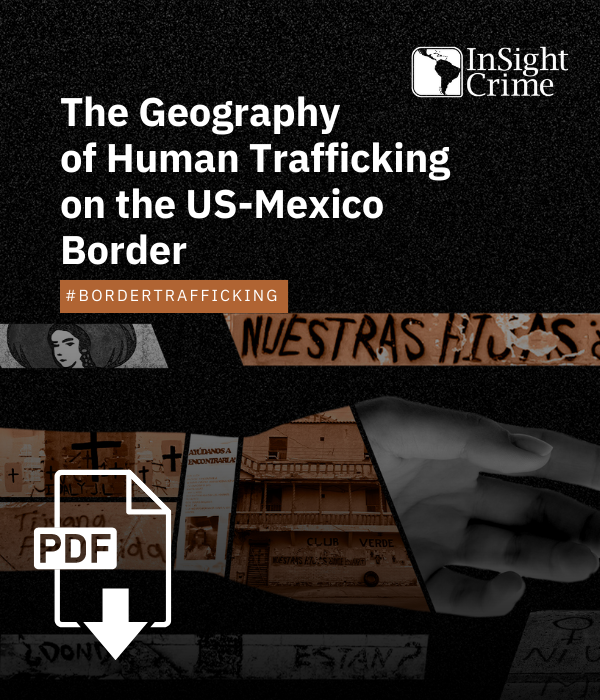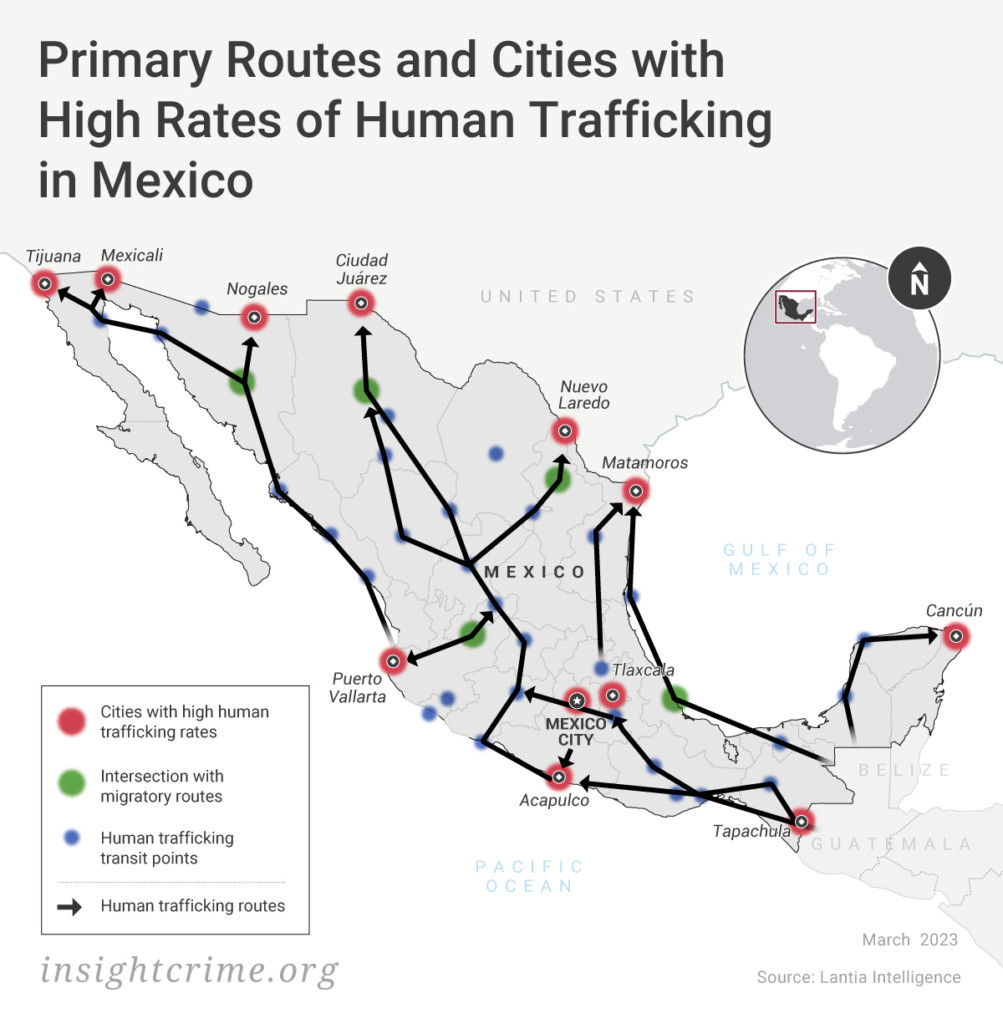Human Trafficking on the US-Mexico Border: Family Clans, Coyotes, or ‘Cartels’?
Human trafficking is one of the most complex and misunderstood criminal economies in the world. This is especially true along the US-Mexico border, where a smattering of organized crime groups operate with varying degrees of power and sophistication and engage in a wide variety of criminal activities. Estimates vary, but there are now several hundred crime groups operating across Mexico, many of which are connected to human trafficking.

*This article is the first in a three-part investigation, “The Geography of Human Trafficking on the US-Mexico Border,” analyzing how human trafficking networks operate along different parts of Mexico's northern border with the United States. Download the full investigation here.
The question is, what type of connection do they have? Officials often portray human trafficking as being controlled by large, organized crime groups — frequently referred to as “cartels” — but the reality on the US-Mexico border illustrates there is a far wider array of groups behind this problem. This report aims to sort through this difficult terrain and analyze the ways in which different types of organized crime groups are involved in human trafficking. The goal is to inform policymakers who are looking to address human trafficking, so they can better focus their limited resources. We also aim to provide relevant stakeholders with opportunities for positive intervention to mitigate this problem.

The findings are based on two years of desktop and field research across the Mexican states of Baja California, Chihuahua, Sonora, and Tamaulipas. It includes dozens of in-person and remote interviews with sex workers, trafficking victims, anti-human trafficking advocates, prosecutors, security experts, government officials, researchers, and academics. The team also visited several cities along the US-Mexico border that are known to be major human trafficking hotspots. In addition, we analyzed government data on human trafficking investigations and prosecutions, judicial cases, and previous studies on the topic.
Major Findings
1. There are four major criminal corridors along the US-Mexico border, each of which has a slightly different dynamic of human trafficking. Most of these operations are run by small, clan-based criminal groups who buy off and/or collaborate with corrupt local officials. In each, the extent to which Mexico's major organized crime groups are involved in human trafficking varies significantly. This ranges from supplying victims to human trafficking networks to taxing those networks via extortion but rarely involves total control of these operations.
2. The corridors illustrate that human trafficking depends on the local organized crime landscape, the capacities of law enforcement, and migratory flows through these corridors. Mexican organized crime's closest connection to human trafficking intersects with migrant smuggling. The two crimes are distinct, but vulnerable migrants often find themselves forced into working for organized crime groups or sexually exploited by opportunistic individuals responsible for guiding them through this area.
3. Policymakers seeking to deal with human trafficking would do better to push for further research and increased resources for data collection and analysis. There is a serious dearth of data related to this crime on both sides of the US-Mexico border, which contributes to uncertainty about where to target resources. Without systematic data collection on both victims and victimizers, it is difficult to understand the true nature of human trafficking in this space and thus focus resources towards mitigating its impact.
What are your thoughts? Click here to send InSight Crime your comments.
We encourage readers to copy and distribute our work for non-commercial purposes, with attribution to InSight Crime in the byline and links to the original at both the top and bottom of the article. Check the Creative Commons website for more details of how to share our work, and please send us an email if you use an article.
This “Eyes on Trafficking” story is reprinted from its original online location.
Fair Use Notice: The PBJ Learning Knowledge Vault is dedicated to advancing understanding of various social justice issues, including human trafficking and related topics. Some of the material presented on this website may contain copyrighted material, the use of which has not always been specifically authorized by the copyright owner. We are making such material available in our efforts to promote education and awareness of these important issues. There is no other central database we are aware of, so we put this together for both historical and research purposes. Articles are categorized and tagged for ease of use. We believe that this constitutes a ‘fair use' of any such copyrighted material as provided for in section 107 of the US Copyright Law. In accordance with Title 17 U.S.C. Section 107, the material on this site is distributed without profit to those who have expressed a prior interest in receiving the included information for research and educational purposes. For more information on fair use, please visit: “17 U.S. Code § 107 – Limitations on exclusive rights” on Cornell Law School's Legal Information Institute.

ABOUT PBJ LEARNING
PBJ Learning is a leading provider of online human trafficking training, focusing on awareness and prevention education. Their interactive Human Trafficking Essentials online course is used worldwide to educate professionals and individuals how to recognize human trafficking and how to respond to potential victims. Learn on any web browser (even your mobile phone) at any time.
More stories like this can be found in your PBJ Learning Knowledge Vault.
EYES ON TRAFFICKING
This “Eyes on Trafficking” story is reprinted from its original online location.
ABOUT PBJ LEARNING
PBJ Learning is a leading provider of online human trafficking training, focusing on awareness and prevention education. Their interactive Human Trafficking Essentials online course is used worldwide to educate professionals and individuals how to recognize human trafficking and how to respond to potential victims. Learn on any web browser (even your mobile phone) at any time.
More stories like this can be found in your PBJ Learning Knowledge Vault.

